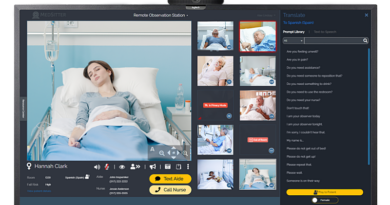How has the COVID-19 Pandemic changed the way we live?
By Lynn Gibson, VP/Chief Technology Officer, Christus Health
The vocabulary of springtime has changed from talks of summer vacations to shelter in place and social distancing. Thoughts of open concerts and beaches are being replaced with home repair projects and making sure supplies of essential items are kept in stock. People are afraid of coming into a hospital or doctor’s office for what had been a few months ago, a routine event. At different times in life, there are events that become markers that everyone recognizes changed things to come. Pearl Harbor, the assignation of President Kennedy and later Martin Luther King, and September 11th come to mind and the impact those events had on the world at the time. Now we have COVID-19 that will change the way all business, social interacting, and healthcare is delivered and viewed for decades to come. The delivery of healthcare will never be the same.
Twenty-five years ago, we talked in futuristic terms of collecting data on patients. Today we talk about the updates to the EMRs. Fifteen years ago, we were talking about how cool it would be if we carry a PC in something small like a cell phone. Major technological strides were made. Many have spoken about the future changes that were coming with telehealth, but I believe most of us found a massive kick start with the COVID-19 crisis. Virtual care is now a more common phrase with nearly every household. In a matter of a few short weeks, the federal government managed to change the rules on payment for telehealth visits, relax the guidelines on privacy, and mount a tremendous funding effort to build out virtual health programs around the country. The nature and reasons for an office visit have now changed and will forevermore. The issuance and fulfillment of prescriptions have changed for some pharmaceutical providers. The Pandemic has had a tremendous impact on the healthcare delivery model that transcends office visits, clinic operations, hospital stays, and surgical procedures.
For those who were expecting changes to be years away, found themselves scrambling as patient census and office visits dropped, along with elective surgeries were put on hold. Hospitals soon found themselves struggling as the offerings they relied upon to cover their costs, such as elective surgeries and diagnostic testing, were being put on hold. Individuals with significant illnesses were reluctant to come for care for fear of being exposed to something worse.
Many have spoken about the future changes that were coming with telehealth, but I believe most of us found a massive kickstart with the COVID-19 crisis.
Lynn Gibson, VP/CTO, Christus Health
Hospital organizations such as mine were able to quickly set up associates to work from home, to provide remote patient monitoring, to provide our physicians with options to offer patient encounters from their office or home using different technologies and allow visual interactions between the patient and the doctor. We had already been working on the endpoint approaches and had created the framework long before the virus was even known. Had we not had it in place, our ability would have been complicated to respond with to immediate and high demand. Although the virus itself was not anticipated, the coming changes in a delivery method were.
As the world prepares to return from the edge, new challenges are appearing on the horizon. Will big clinics be needed? Will the office space be necessary? Will the healthcare model now move from treatment to prevention? Many pundits are now asking, who is going to be the trusted provider of those services—will it continue to be their family physician, or will it become Amazon, Apple or Goggle, or something not yet seen in the marketplace? Will the federal government release other restrictions such as requiring prescriptions from physicians?
For the past few weeks, our world has been locked on science and technology, but soon we will be talking about what to do to keep this from happening in the fall, if not ever again, and how to be better prepared. There will likely be two different approaches where one group will want to bring technology such as new vaccines, new applications to diagnosis, new at-home devices for testing, and monitoring. There will be another group that will focus on process and delivery models. The language of different delivery models, effective response and preventive healthcare models will become a common language in the discussions both on a professional as well as news media circles.
What many of us have come to realize is that we already have technology options that are great for responses to critical events. We have proven that industry can leapfrog on the development of new technologies, but the mass manufacturing of such solutions still takes time. The challenge is having processes options that worked. We have traditional treatment models but not acceptable response models to massive outbreaks. We don’t have predictive models that can have any form of accuracy. Today, data exists all-around healthcare in retrievable collections managed by electronic systems. Yet, experts disagree on the reliability. They all want to apply the same processes that were used in the 1960s to collect, analyze, report, and publish findings. It is time to think differently about what we already have and how we can put it in use. It is time to take advantage of all that has been accomplished in the last ten to fifteen years. Now is the time to make that difference happen.




Pingback: Population Health Transformaton: Leveraging Digital and Information Technology